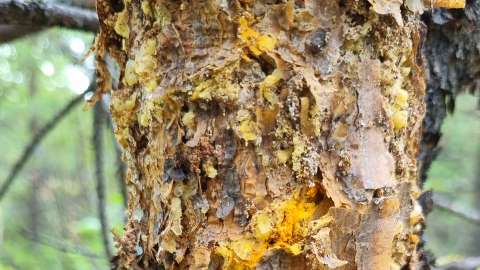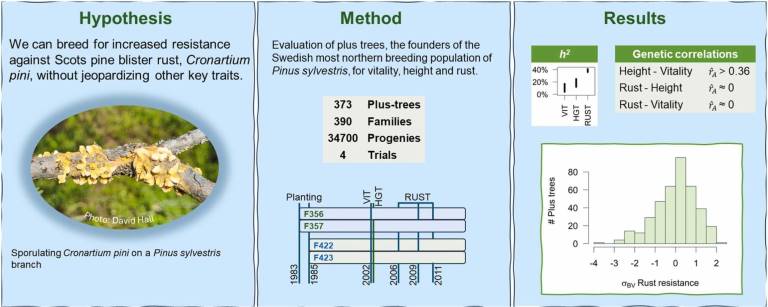Blister rust resistance breeding does not compromise other traits

Scots pine blister rust is a rust fungal pathogen that has become more noticeable in recent years and has increased in recorded incidence in Northern Scandinavia. This has prompted an initiation of resistance breeding to the fungus in the Northern Swedish pine breeding program. To accomplish this, it is necessary to evaluate the breeding potential for increased resistance and putative impact on other breeding objective traits that may have genetic correlations to resistance.
To assess the potential of the trait to be included in the breeding program we examined half sibling families in four trials of which two had high incidence of Scots pine blister rust in a range of 25.4–42.1 %. We assessed vitality and height in one year and rust lesion frequency at two later time points. We found that rust resistance had a narrow sense heritability of 0.36–0.41, while vitality reached 0.17 and height 0.25.
We found a high genetic correlation between sites in rust resistance and no genetic correlation between rust resistance and either vitality or height. This means that breeding for increased resistance in Scots pine can be done effectively without risking a negative impact on established breeding objective traits and that resistance is stable across environments.
Highlights
- The damage caused by Scots pine blister rust has increased in Northern Sweden.
- Breeding for resistance to other Cronartium species has been successful.
- There is a substantial genetic component in Scots pine blister rust resistance.
- Genetic correlation exists between vitality and height but not rust resistance.
- Breeding for increased resistance can be done without impacting other traits.
Graphical Abstract

We will review and publish your comment as soon as possible.



